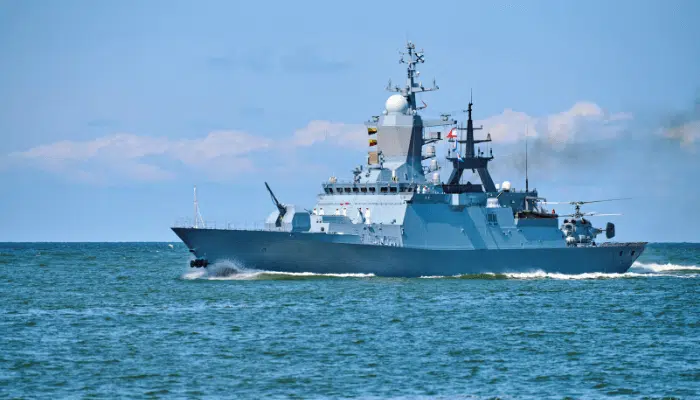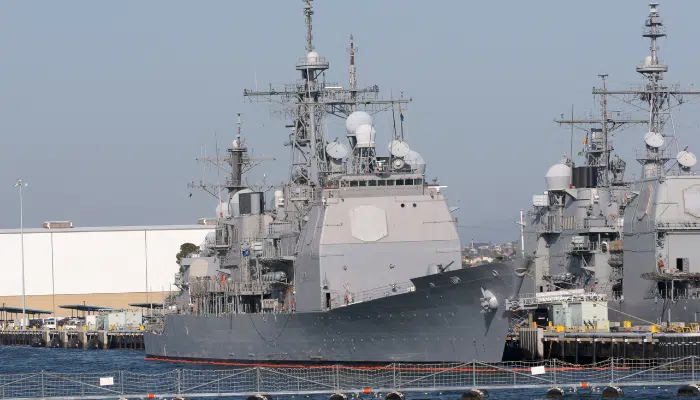What Are Hybrid Ships?
Much like their designs, the way ships are powered has undergone several changes over generations. From the primitive days of using large wind-borne sails to nuclear-powered vessels, the evolution is often a matter of great interest and introspection for maritime enthusiasts.
For over the last two centuries, coals followed by fuel oils have been the predominant sources of energy for propulsion, enabling the workhorses of the seas to grow bigger and more advanced, transcending interoceanic boundaries and travelling for days at an end.
Diesel-powered ships still remain the most common form of vessels around the world. However, in recent times, amongst various developments in the realm of propulsion, hybrid propulsion is an emerging concept being welcomed by many and is slated to gain much more popularity in the years to come.
Though the advantages of this increasingly popular mode of propulsion technology in the world of shipping are manifold (will discuss next), one of the main areas of concern from which its adoption is being fostered at an accelerated pace is pollution.
Pollution due to carbon emissions, needless to say, is one of the biggest challenges the multi-trillion-dollar industry is grappling with.
As per reports, shipping alone accounts for over 15% of carbon and nitrous pollution (NOX emissions in technical terms) and almost 10% of other noxious gases like sulphur.
Another alarming research asserts that a conventional diesel-run large tanker or a containership can emit harmful pollutants equivalent to 50 million cars during its operational lifetime!
In the past several years, the International Maritime Organization (IMO), in tandem with governmental bodies worldwide, authorities, statutory concerns, classification bodies, and the various stakeholders of the industry itself, has been completely engrossed in developing, propagating and implementing several means to curb the levels of emissions from vessels.
There has been some degree of success but given the increasing number of fleets globally, lots and lots still need to accomplish.
Some crucial milestones in the quest for emission reduction have been the stringent requirement for compliance with technical benchmarks like EEDI (Energy Efficiency Design Index) or EEXI (Energy Efficiency Existing Ship Index), use of low-sulphur fuels and gases, exhaust cleansing and filtrations, use of better-quality types of diesel, more efficient and low consumption engines, and of course, increasing preference for alternative fuel options like LNG.
Now let us discuss more on hybrid propulsion.
What are Hybrid Ships And How Do They Work?
Hybrid ships, as the name suggests, are simply vessels designed and constructed to use a combination of alternate means of propulsion mainly from a conventional gas or fuel-powered engine and also, from electrical sources derived from rechargeable means like batteries.
The concept is analogous to electric cars which are now close to dominating the automobile sector in a few years.
Once again, as said, hybrid ships are not fully electric and are in ‘co-existence’ with an engine. Thus, for a given power requirement, the supply is from the engine as well as through supplement from the battery source.
Moreover, for several operations having low power requirements such as manoeuvring in ports, operating in a dock or terminal, or simply in a standby condition, the supply can be generated entirely from the batteries themselves.
At this juncture, one very important thing to note is that hybrid propulsion or hybrid ships are not the same as diesel-electric propulsion, a much older and common concept in several mainstream vessels for over a century.
Diesel-electric propulsion is nothing but a type of conventional propulsion system where the power generated from the main engine is simply converted into electrical energy through generators and is used for running the propeller shaft instead of a direct mechanical drive in conventional diesel propulsion.
On the contrary, hybrid propulsion, as mentioned above, alludes to a vessel that has a combination of powering capabilities from a mainstream propulsion system as well as an additional or surplus means mainly in the form of rechargeable batteries.
Essentially, the additional means of power in the form of batteries can be utilised in two ways:
I) Complementing the requirements at full operation and service and enabling the main engine to operate within the standard rating without unnecessary spikes.
In technical terms, this is known as “peak-shaving” which in simple words, refers to managing sudden and dynamic demands in power requirements.
So, for hybrid ships in full operation, whenever there is a sudden peaking demand in power due to a situation like increasing speed to reduce voyage time or countering inclement weather conditions in the sea, the main engine or propulsion system does not suffer high amounts of loading as this extra power requirement can be compensated at that moment by the given alternate means. Thus, the main engine continues to operate within the optimal rating.
II) Catering for the entire load requirements of the vessel in lower power situations, as mentioned above. For vessels dedicated to areas like offshore or research, where there is a significant degree of low-power operations with the vessel being positioned in a single place.
For several modern designs, battery power is being fully or partially used for technologies like DPS or Dynamic Positioning Systems or thrusters, and for various other operations like in deck cranage, cargo equipment, pumping, air-conditioning, and also for hotel loads (internal electrical power requirement for day-to-day operations in a vessel). When the battery load fully replaces or substitutes the main engine load, this is known as ‘spinning reserve.’
Hybrid ships have mechanisms for switching between the two means of power or deploying the two supplies simultaneously as and when required.
Though we do not go into the details of the batteries, they are generally heavy-duty, industrial batteries, mainly of Lithium-ion type. These batteries have the means of supplying thousands of Kilowatts of power in continuous cycles based on the requirement and size of the ship.
Most of these batteries are operated in the means of a series-parallel combination connection such that adequate power can be provided from a single supply line as well as when one of the lines fails, the others can continue their supply without being affected. Remember the series-parallel connection from your elementary physics classes?
Now, the important question arises: how are these batteries recharged from time to time? This brings us to two kinds of arrangements that commonly exist in hybrid ships:
Plug-in Hybrid Ship: This is analogous to a plug-in hybrid car that can recharge its batteries at a station using recharging units. Similarly, plug-in hybrid ships charge their batteries when in a dock or terminal using shore power. This energy is stored in the battery packs. These ships are essentially not very common in very long-distance operations as the charge stored in the capacitors of the batteries can be used only for a limited number of days and once again, there is a requirement for charging.
Conventional Hybrid Ships: These vessels do not require a routine recharge at the shore. The batteries can be recharged using generators, alternators, and other means using the power derived from the main engine or the auxiliary engines. This is a mutually interrelated arrangement where the batteries are dependent on the conventional engines for recharging and the high or peak load requirement of the engine(s) is shared by the battery power.
Often the recharging takes place during low-power situations when the engine is running at optimal load and the surfeit energy generated is utilised in charging the batteries. This arrangement is advantageous for long-distance vessels.
Several vessels in a wide range of sizes utilise hybrid power, where commonly the direct diesel drive is used at high power and simply electric supply from the batteries is used at lower power. As and when the situation demands, a combination of both can also be used as described above.
Hybrid ships can be something as small as a coastal ferry or something as large as an offshore support vessel. The installed battery power should be proportional to the size of the vessel as well as the overall requirements of loading or power consumption of the vessel.
So, this means that for a given size and engine of a hybrid ship, the battery arrangement should be such that the minimum electric power that it is capable of producing should be sufficient to take care of the maximum peak loads in worst-case scenarios by supplementing the engine load without making it exceed the rated limit, and also cater to the operational requirements at low power as desired.
Hence, for a given design and operationality of a hybrid ship, the selection of the main engine, as well as the battery powering requirements, should be done in tandem.
Though several new vessels are being built with hybrid capabilities, many old and existing vessels are being retrofitted to be hybrid as well. The large supply vessel Viking Energy, built-in 2003 as a dual-fuel (diesel and LNG) vessel has been recently retrofitted to become a plug-in hybrid vessel by installing a 1600 KW battery system onboard.
Advantages of Hybrid Ships And The Way Ahead
Now the most important aspect of any topic related to hybrid ships or hybrid propulsion is the consideration of the advantages it has to offer.
Apart from the slight drawback of being a bit expensive for larger vessels during installation (which, however, is overshadowed by the resultant savings by a huge margin during service), the advantages of hybrid ships are the main reasons why it is attracting shipowners and operators around the world.
- The foremost and the biggest advantage of hybrid propulsion is fuel efficiency. Successful hybrid installations have shown fuel savings in the order of 15-20% as compared to traditional diesel-only propulsion. The number has also gone up to as much as 30% for smaller-sized vessels. Even amongst large vessels, Viking Energy has been reported to save fuel as much as up to 25-28% at times and has already become an exemplary name in the domain of hybrid propulsion. The savings on fuel consumption can be attributed to a fully-electric mode of operation during low power situations as well as to absorbing peaking loads and keeping the engine within optimum limits without unnecessary surges as described above. This equates to a substantial amount of energy-saving and hence, is very much pocket-friendly for owners and operators without compromising on operational efficiency.
- For the same reasons described in the above point, this brings about another very crucial advantage in the form of lower emissions. As mentioned at the beginning of this article, efficient fuel consumption amounts to a reduction in carbon and other noxious emission levels. Depending on the type of vessel, the reduction in emissions and decarbonization has been anything in the order of 20-30%, which is a significant improvement. Being environment-friendly, hybrid ships are hence gaining an increased level of acceptance.
- Propulsive efficiency: An engine operating at optimal load always is one of the benchmarks of propulsive efficiency.
- Flexibility: Option to switch between powering modes anytime as required and also having a reliable electrical backup when the main source of power is affected.
- Lesser noise and vibration as compared to conventional propulsion.
Hybrid propulsion undoubtedly is one of the pioneering developments in the maritime sector. Though several vessels are being constructed as hybrid and older vessels are often being retrofitted for compliance with energy efficiency standards, a lot more remains to be done. It definitely has a very bright and greener future ahead.
You might also like to read:
- What are Container Ships: History, Types And Design
- Different Types Of Roll-On Roll-Off Ships
- A Guide to Different Types of Boats
- Top 10 Biggest RoRo Ships In The World
- A Guide To Types of Ships
Disclaimer: The authors’ views expressed in this article do not necessarily reflect the views of Marine Insight. Data and charts, if used, in the article have been sourced from available information and have not been authenticated by any statutory authority. The author and Marine Insight do not claim it to be accurate nor accept any responsibility for the same. The views constitute only the opinions and do not constitute any guidelines or recommendations on any course of action to be followed by the reader.
Do you have info to share with us ? Suggest a correction
Latest Type Of Ships Articles You Would Like:

About Author
Subhodeep is a Naval Architecture and Ocean Engineering graduate. Interested in the intricacies of marine structures and goal-based design aspects, he is dedicated to sharing and propagation of common technical knowledge within this sector, which, at this very moment, requires a turnabout to flourish back to its old glory.
Subscribe To Our Newsletters
By subscribing, you agree to our Privacy Policy and may receive occasional deal communications; you can unsubscribe anytime.

















